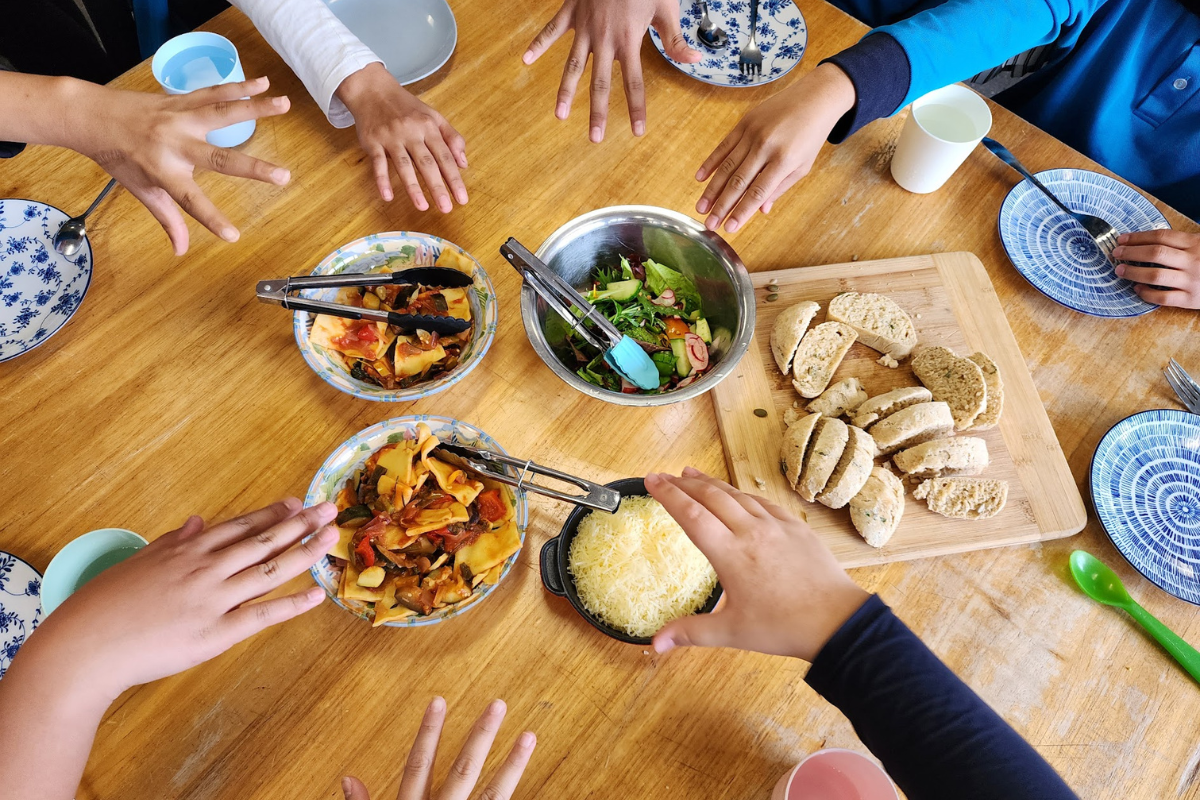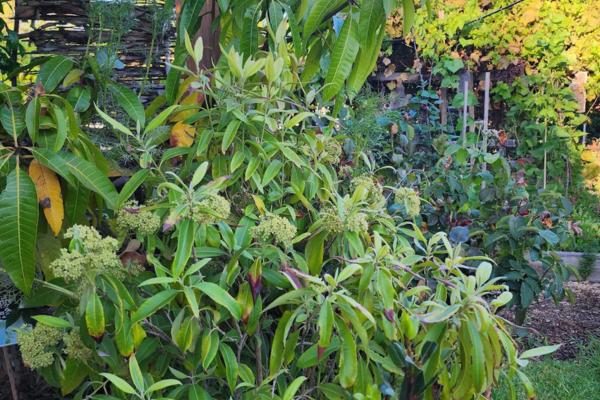Five bush food flavours

The Kitchen Garden Program is a beautiful space for embracing the native bounty of Australia by learning how to cultivate Indigenous plants and incorporate them into the kitchen.
Schools across Australia are making the most of native ingredients in their Kitchen Garden Program, with clever gardening tips and culinary creativity right throughout.
‘Old man’ saltbush
Majura Primary School, in ACT, have recently added an Indigenous garden space, with a bush tucker garden growing many native ingredients such as saltbush, mountain pepper, kangaroo apple, native raspberry, Hardenbergia, Dianella, and much more!
“We have found ‘old man’ saltbush useful,” says Siobhan Palmer, the school’s Kitchen Specialist. “This variety has more flavour than the smaller leaf saltbush and can grow quite large. It is a plant that does well in our garden and is drought tolerant and able to thrive in sandy, hot areas.”
Salt bush can be an incredibly diverse ingredient in the kitchen. The students at Majura Primary School use harvested saltbush leaves as a tasty addition to Stephanie Alexander’s classic potato and rosemary pizza recipe and to enhance a salsa verde for a delicious capunti pasta dish.
At Blair Athol North Primary School, in SA, students creatively used their saltbush to make saltbush and vinegar chips. The leaves can also be dried, ground, and mixed with lemon zest, to create a beautiful spice blend, which Majura Primary students sold at the recent school fete.

Left: Marjura Primary School's potato, rosemary, and saltbush pizza. Right: Blair Athol North Primary School's saltbush and vinegar chips.
Warrigal greens
Warrigal greens are another great example of a native plant that is versatile in both the garden and the kitchen.
“It's famous for being a great spinach and greens substitute, but I love it in the garden as a living mulch,” says Claire Gilbert, Gardening Teacher at Montmorency Primary School, VIC. “You can leave it to grow over a fallow bed and it will protect it from moisture loss and weeds while creating a habitat for insects. It’s also incredibly hardy and drought tolerant, it grows fast and is easy to propagate.” She also recommends using the fleshy, moisture-packed leaves for composting, if you have too much to eat!
Students at Montmorency Primary love to use their Warrigal greens to make a Shared Table favourite: Seasonal Savoury Muffins. “It really complements any seasonal vegetable or herb that is growing in the garden,” says Claire, “and it’s also so easily a backup recipe for all seasons!”

A bountiful native Australian harvest, courtesy of Blair Athol North Primary School.
Lemon myrtle
Initially a bit tricky to grow, this beautiful plant will thrive once you find the right spot. It has the most delicious smell when you harvest and snap the leaves.
The students at Blair Athol North Primary School love this special ingredient; they have used it to create a delicious lemon myrtle and lime ice cream and as a lovely addition to damper. A very popular lemon myrtle creation at Blair Athol Primary is the tea mix. “Students love the tea we make from this,” says Thomas Hayward, Garden Specialist, “either on its own or blended with lemon verbena.”
Mountain pepper
This flavourful, versatile ingredient grows in forest areas, and requires damp soil. At Majura Primary School, the berry is thriving in a shady garden bed, as they wait patiently for the plant to be laden with berries to harvest, dry, and use as a delicious pepper substitute in the kitchen.

Blair Athol North Primary School's lemon myrtle plant.
Wattleseed
A nutty, aromatic ingredient, wattleseed is easy to grow, but due to the plant’s spikes, schools like to keep this one in a garden area not frequented by students. Harvesting wattleseed is a bit slow, due to processing the seeds out of the pods; however, Thomas Hayward from Blair Athol North Primary School tells us that “it is still a fun, mindful exercise, and is good for having a chat with friends while processing.”
In Blair Athol North Primary School’s kitchen, the seeds are pan roasted and then prepared into a flour using both a hand grinder and a mortar and pestle. This can then be added to damper, used in shortbread biscuits, and added to muffins.
Want more ideas for your native garden? If you’re a member, visit the Shared Table to access our variety of cooking and gardening resources.
< Back to Latest News
